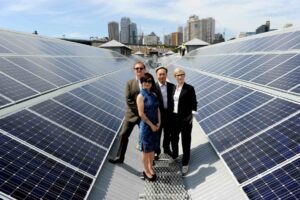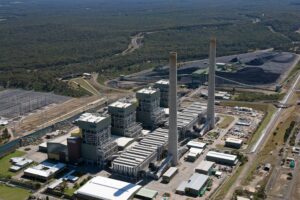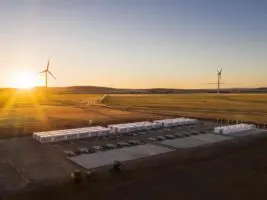Solar overtook wind as Australia’s largest source of renewable electricity in 2020, as strong growth in both large-scale and small-scale installations helped the market share of renewables surge to 24.4 per cent.
Combined, the market share of renewable energy sources also overtook the market share of fossil gas generation for the first time, which fell to 20.0 per cent in 2020.
According to the latest edition of the Australian Energy Statistics, the amount of electricity produced from renewable energy sources grew by 16.3 per cent in 2020, reaching 64,666GWh in total, while overall consumption of electricity remained effectively unchanged.
This saw the market share of fossil fuel generation fall to 75.6 per cent in 2020 – a dramatic decline from where it was just a few years ago, down from 84.8 per cent recorded in 2017.
Generation from black coal took the biggest hit, falling 6.8 per cent - while still supplying around 41 per cent of Australia's total electricity generation. Generation from fossil gas generation fell 4.6 per cent, while generation from brown coal generators increased by 3 per cent.
The biggest declines in coal generation occurred in New South Wales, where it fell by 7.2 per cent in 2020, and in Queensland, where it dropped by 6.0 per cent.
The amount of renewable electricity generation grew by more than 20 per cent in every state and territory, except for the high penetration states of Tasmania and South Australia, where renewable energy sources already supply more than half of the state's power.
Thanks to a dramatic rise in generation from both small-scale and large-scale solar installations, solar energy is now the largest source of renewable electricity in Australia, overtaking wind for the first time.
In 2020, total output from large-scale solar projects rose 36.2 per cent, while small-scale rooftop installations added a further 27.5 per cent.
Since 2015, total output from Australia's solar installations has increased by a massive 385 per cent, driven in large part by a 1,368 per cent increase in generation from large-scale solar projects in just five years.
While the latest data shows the accelerating pace of change occurring in the Australian electricity market and the dramatic shift away from coal and gas and towards renewables, federal energy and emissions reduction minister Angus Taylor stressed the Morrison government saw a need to keep fossil fuels in the market.
"My focus is ensuring Australia's energy system remains reliable and affordable for all Australians," Taylor said in an accompanying statement.
"We are a renewable energy powerhouse, and this is something we should be proud of, but renewables need reliable generation to back them up and maintain pressure on prices when the sun isn't shining and the wind isn't blowing."
"Reliable sources of energy, like coal and gas, will continue to be needed to keep the lights on and deliver 24/7 power for households and businesses as more and more renewables enter the system," Taylor added.
Taylor has endorsed a series of reforms to Australia's main electricity market - first proposed by the Energy Security Board - that would establish a new mechanism to financially reward 'dispatchable' generators to remain in the market for longer.
With data showing an ongoing decline in the market share of fossil fuel generators, while investment in new wind and solar projects continues to grow, incumbent coal and gas generators have asked the government and regulators to effectively intervene with the creation of a new market for capacity.
The solution, proposed by the Energy Security Board, would create a 'physical retailer reliability obligation' that would see large incumbent fossil fuel power stations paid to keep their generation capacity in the market, potentially delaying their closure as an ageing fleet of generators become commercially unviable to maintain.
Taylor told an energy conference in May that he believed it would be necessary to "incentivise our existing thermal generators to remain in our market for as long as needed."
The Queensland government is currently considering how it will respond to a dramatic failure of one of the state's coal fired generators, the Callide C power station.
The power station, one of the state's youngest coal plants, has been rendered unusable after a destructive equipment failure, which plunged much of Queensland into a prolonged blackout. Flagged options include direct replacement, early retirement or the construction of a new battery storage facility at the site.
See also RenewEconomy's new reference maps:
Large Scale Wind Farm Map of Australia
Large Scale Solar Farm Map of Australia







